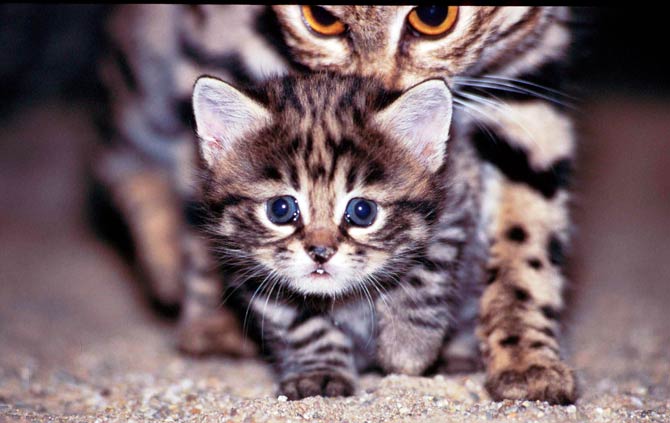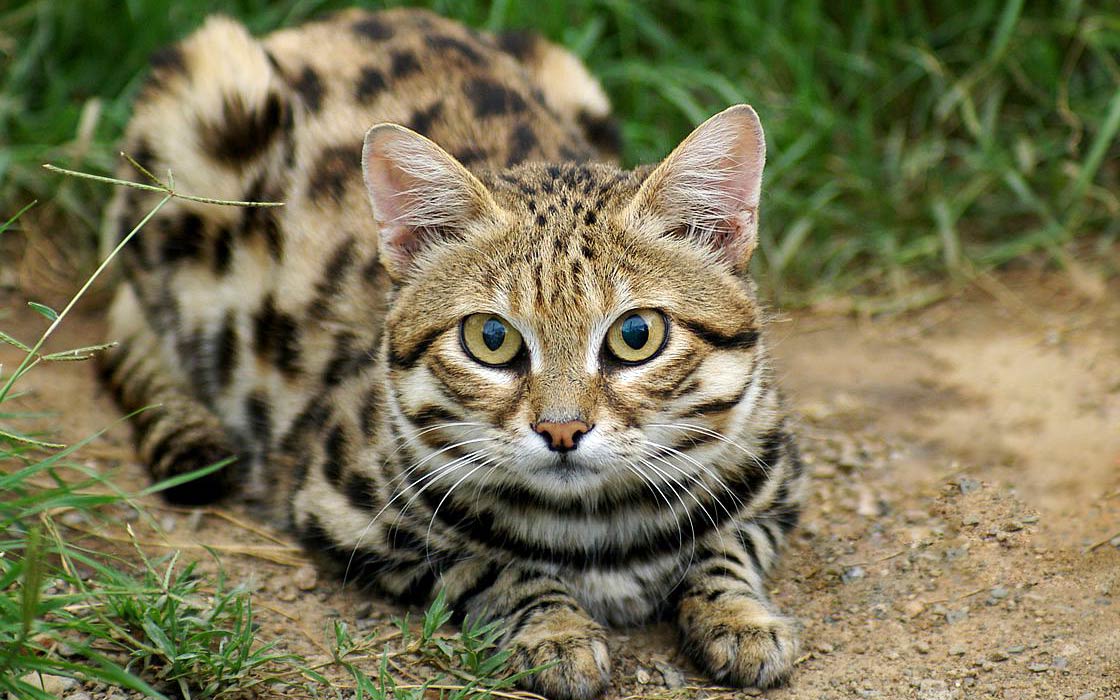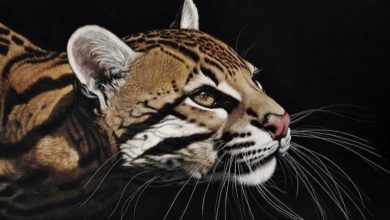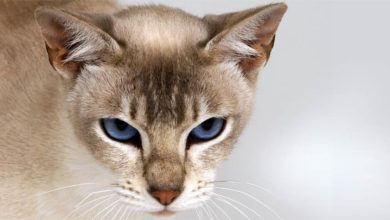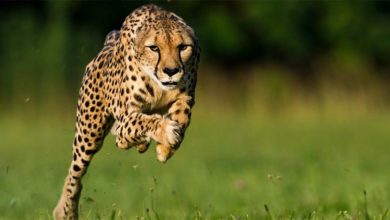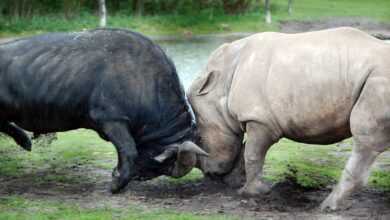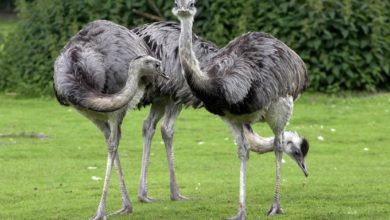Black-footed cat, small-spotted cat – the smallest wild cat in Africa
Although they resemble ordinary domestic cats, black-footed cats are representatives of undomesticated predatory mammals that inhabit the areas of South Africa. This species was discovered around 1824, described by William Burchell, an English traveler and explorer. They can not be denied their original appearance – small size and unique color make the Black-footed cats seem very cute and friendly towards humans. In fact, they are very unsociable, and meeting them in natural conditions is almost impossible.
Classification
- Kingdom: Animalia
- Phylum: Chordata
- Class: Mammalia
- Order: Carnivora
- Suborder: Feliformia
- Family: Felidae
- Subfamily: Felinae
- Genus: Felis
- Species: Felis nigripes

Habitats
Black-footed cats live in areas from Botswana, through Namibia, to South Africa, preferring dry savannas, as well as semi-arid areas and meadows. They also rarely climb trees due to their stocky body build. Therefore, they prefer to be among terrestrial vegetation – dense bushes, abandoned burrows are the most common places where they can be found.
Characteristic
Appearance
Black-footed cats are representatives of the smallest species of felids, reaching a height of up to 25 centimeters (10 in) and a length of up to 50 centimeters (19.7 in). They have clearly rounded ears and extra-large eyes with a tapetum lucidum layer, a special reflective film that reflects light with an intense blue sheen at night.
The black soles of the paws are of course the most characteristic, so their English name is Black-footed Cat, French Chat À Pieds Noirs, and Spanish Gato De Pies Negros.
Their coloration is clearly patterned: brown and black, round spots that run in rows along the neck and torso, while there are two stripes on the face. This color has a protective function and provides them with perfect camouflage.
The tail of the animal is thin, has a pointed end, characteristic is 2 or 3 dark, full rings that turn into incomplete towards the base of the tail. Black-footed cats have uniform pink skin, which distinguishes them from other felids, while the limbs are slender and delicate.
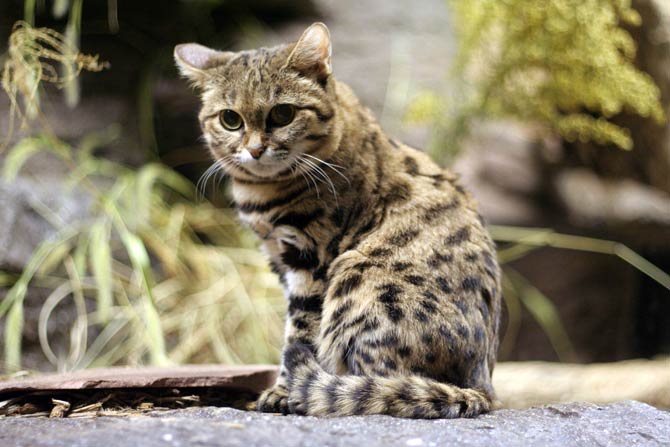
Diet
Representatives of this species feed mainly on rodents, small birds, snakes, and also geckos, they also sometimes eat insects, spiders and scorpions. As you can see, they are much smaller than black-footed cats, which due to their small size are forced to hunt small species.
Black-footed cats drink little because they get most of their fluid requirements from food. They cannot be denied a great appetite, they are very active in getting food and they hunt many times a day. They can also get up close and hunt for a prey much larger than them, and when their appetite is satisfied, they make provisions by hiding leftovers in dug burrows.

Behavior
Representatives of this species are extremely unsociable – they spend most of their time alone, do not like to be disturbed, and when they recognize any signs of danger, they immediately look for a safe haven. Contrary to appearances, they can defend themselves well and have a brave character, in crisis situations they are very brave and are not afraid to attack, regardless of the size of the opponent.
Black-footed cats spend most of the day resting, preferring a night-time lifestyle. They communicate by means of a characteristic purring and quiet gurgling, while in emergency situations they hiss and growl.
Although they are small, they can make much louder beeps than other animals of similar size. This is because black-footed cats live far away from each other and thus invite another individual during the mating season. This is the only time black-footed cats do not live alone.
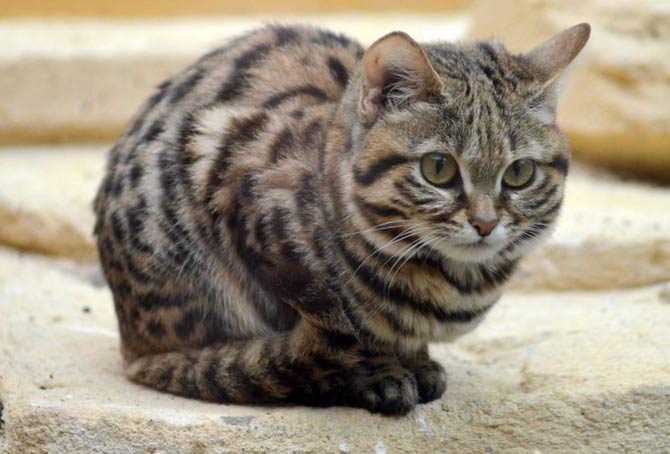
Breeding
During the mating season, black-footed cats resign from a solitary lifestyle. Females reach sexual maturity between 8 and 12 months of age, their heat lasts several days, during which they behave very loud and aggressive.
Pregnancy in female black-footed cats lasts an average of 65 days, they give birth to their little ones in safe burrows. Usually a litter consists of two kittens, although there are also more numerous litters.
A female cat gives birth twice a year – in spring and autumn, kittens weigh an average of 70 grams, they are blind and helpless, and a week after giving birth, they are moved by their mother to a new burrow to cover up the traces of childbirth and ensure their safety.
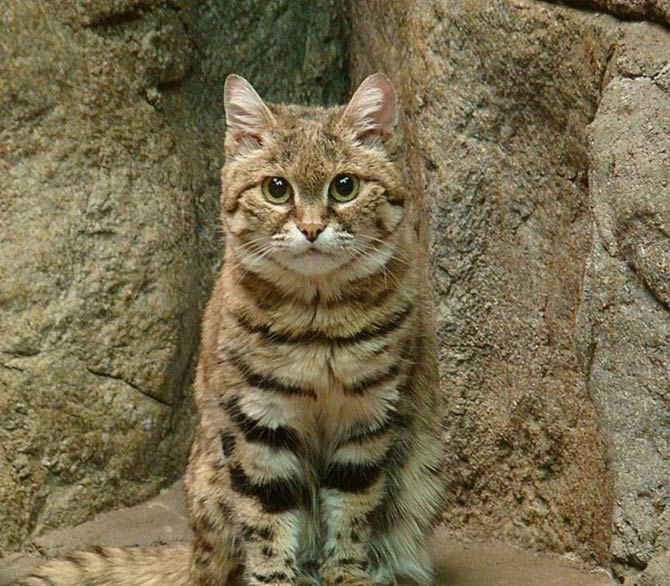
Detailed data / dimensions (size)
Black-footed cat, small-spotted cat (Felis nigripes)
- Body length without tail:
- males: 37 – 43 cm (14.5 – 16.9 in)
- females: up to 37 cm (14.5 in)
- Tail Length:
- males: from 16 to 20 cm (6.2 – 7.9 in)
- females: 12.5 – 17 cm (4.9 – 6.7 in))
- Height: 25 cm (9.8 in)
- Weight:
- males 1.9-2.45 kg (4.2 – 5.4 lb)
- females 1.3-1.45 kg (2.7 – 3.2 lb)
- Gestation: 63-88 days
- Lifespan: up to 10 years in captivity. It is not known how long they live in the wild.
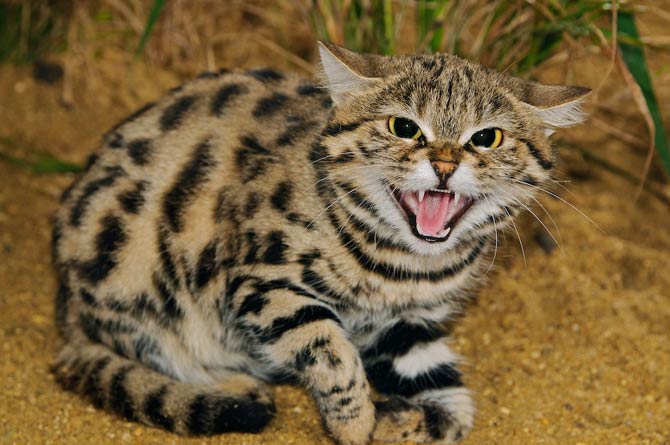
Black-footed cat – interesting facts
- This species is extremely rare and it is very difficult to find it in nature. The total black-footed cat population is currently around 10,000.
- They can hunt every 50 minutes and eat up to 250 grams (0.55 lb) of food at night, which is about 1/5 of their body weight.
- Black-footed cats travel from 5 to 16 kilometers (3 – 10 mi) in one night. Each of them marks their area with spraying, which they do up to 12 times an hour. This is a message for other individuals that this area is already occupied.
- The female allows her young to use her territory for the first few months of their life. After this time, they are on their own.
- In 2011, the first in vitro fertilization in this species took place, and therefore two healthy kittens were born. Thanks to such measures, there is a chance to support the black-footed cat species for many years.
- During hunting, they most often use the method of stalking. At night, they try to get as close to the victim as possible before making the final jump. Sometimes they lurk by rodents’ burrows and silently wait for their prey.
